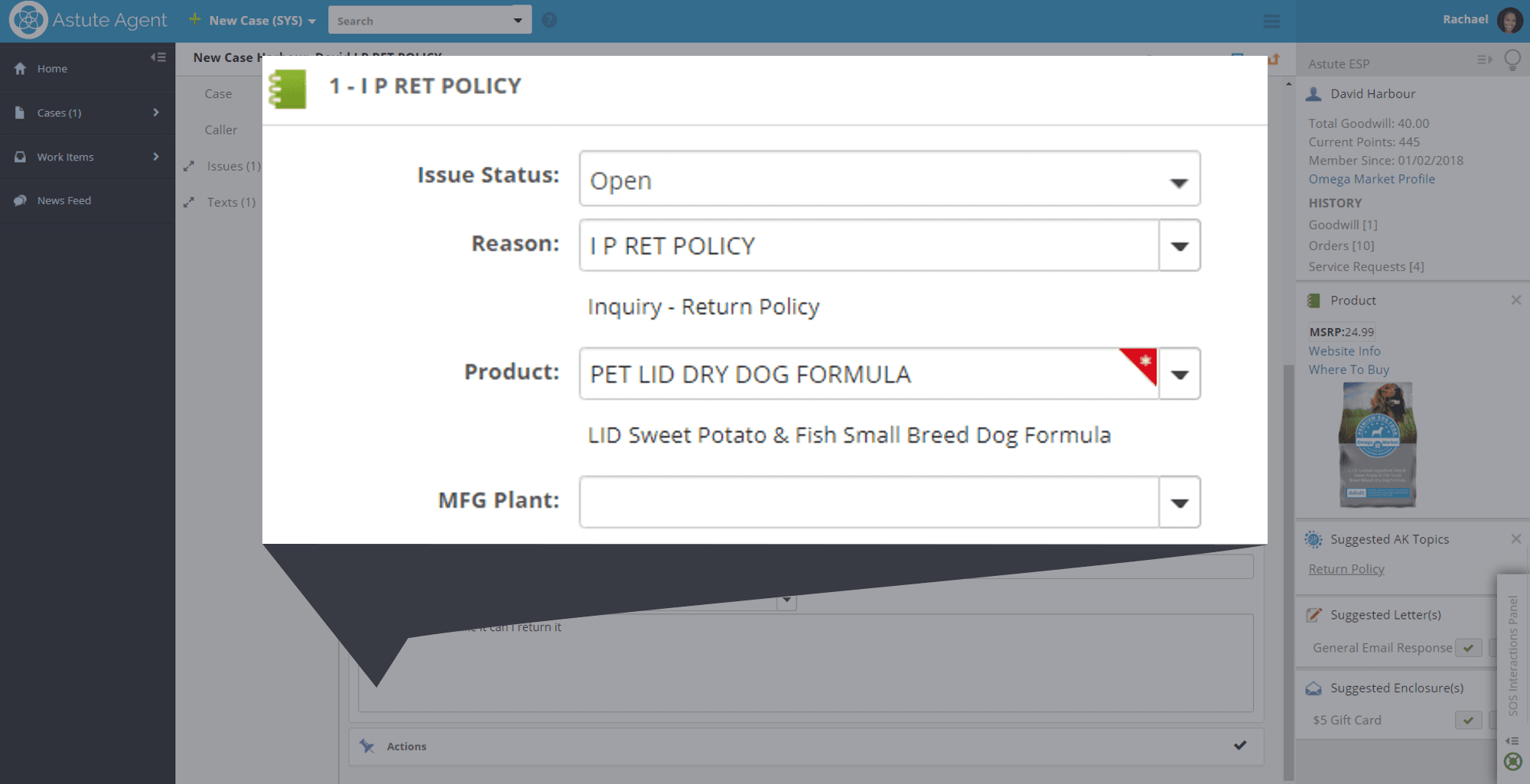Every time a new customer service technology comes around, from the first interactive voice response systems to AI-driven customer service automation, we wonder when it’s time to jump on the bandwagon.
The time has come for next best action to have its moment in the spotlight, and here’s why.
What is next best action?
Let’s start by defining what next best action really means.
The traditional definition of next best action is a customer-centric approach that considers all the options for each customer interaction, whether sales, marketing, or service-related, and suggests the best one. It uses data on current and potential customers to provide a recommendation for the next action in the very moment of engagement.
This approach has gained widespread usage in the marketing community as a way to stand out in a crowded marketplace, slicing through the thousands of marketing messages individual consumers are exposed to every day to offer hyper-targeted, compelling, one-to-one communication.
But in the context of customer service CRM, next best action doesn’t get the same attention as with marketing use cases.
What about CRM next best action for customer service?
When we define next best action for customer service, we’re referring to specific points within a call center agent’s workflow where suggested next steps are offered. Using AI and machine learning as well as pre-configured business rules, agent desktop software can interpret customer case data and provide guidance to agents in the form of suggestions of what to do next. This application of the technology suggests actions to the agent instead of recommending actions the customer should be prompted to take.
Think of CRM next best action technology as just like following your phone’s GPS directions in your car, showing you the best way forward.
Why should service teams use next best action?
Marketing has long enjoyed the benefits of this tech to enhance their engagements with customers – and now it’s Customer Service’s turn. Here are five reasons why service teams need to be using next best action in their customer interactions:
1. Smart in-the-moment suggestions save time
CRM-generated suggestions are often based on the codes for individual products and reasons for contact. Different suggestions will be shown to the agent for a complaint about the taste of Product A than a complaint about a rude store employee, giving the agent the exact information they need for each type of interaction.
Here are some examples of guidance an agent might be automatically shown as they work a case:
Recommended knowledge article about the specific issue, including advice on how best to handle it
Possible goodwill to offer, including the type and amount (pre-set by your business rules)
Suggested follow-up email response to send post-interaction
Detailed product information to answer the customer’s questions
Where-to-buy/closest store location information to guide the customer to an in-store purchase
Previous interaction history with the customer to give the agent more context in their responses
Offering suggested actions is the best way to optimize agent workflow for each case, shaving valuable seconds off each interaction.
2. Higher accuracy and first contact resolution rates
By guiding agents through each step of the process, CRM next best action functionality ensures higher accuracy. This contributes to more instances of agents getting it right the first time, improving first contact resolution (FCR) while also reducing transfers to other teams and escalations to managers.
Beyond the obvious impact to your call center KPIs, your customers will certainly be more satisfied with getting their issue resolved during the first contact, since it’s been proven that consumers dread having to repeat their story over and over again. In fact, a recent Capterra study showed that 72% of customers blame bad service experiences on having to explain their issue multiple times. Higher FCR translates to less repetition, which makes for happier customers.
3. Faster time-to-productivity for new agents
How many new agents do you hire every year? How much time and money do you spend on training? And beyond that, how long does it take for those new agents to be working at full productivity? IBM found that companies spend a minimum of $4,500 per call center agent on training, and many teams are spending 4-6 weeks on new agent training programs.
Offering these tailored suggestions within your CRM agent desktop removes much of the guesswork, reduces the cognitive burden on agents, and lets new agents get their feet wet much sooner. Instead of having to learn or memorize what steps to take for each type of common case, all new agents have to learn is how to navigate the case management system – which, if next best actions and other user-friendly functions are included, should be fairly quick and easy to adapt to.
4. Better consistency across the organization
How frequently are products, policies, and other commonly requested information changing at your company? During the COVID-19 pandemic, many companies are fielding questions from customers they’ve never had to answer before, and the situation continues to evolve daily. How are you ensuring agents are staying up-to-date on the latest information as it changes?
The simplest way to do this is with automatic recommendations in your CRM. When something changes, all you need to do is change the source information in your central knowledge base, or make small adjustments to the configuration of your system. Instantly, the most up-to-date information is being proactively pushed to agents. During a time of rapid change, this is indispensable.
5. More personalized CX
Because these suggestions are based on the customer and their specific issue, they will experience a more personalized interaction when they engage with an agent. As more and more customer interactions have become automated, it’s even more important for one-on-one engagements between your agents and your customers to be highly personalized to help your brand differentiate.
How does next best action work in agent desktop software?
Depending on case data like reason or product code, the Astute Agent CRM software pulls in suggestions for next best actions right on the agent screen, offering guidance without being intrusive.
Where do these suggestions come from? Using AI and machine learning, Astute analyzes the actions taken by your best agents in the past and recommends actions based on that history. Taking into account the behavior and prior actions of agents ensures the suggestions are well-suited to each customers situation. Further machine learning capabilities allow the software to continue learning how agents act in various situations, improving the suggestion accuracy over time.

In this sample case, a customer has contacted the company with a question about the return policy for their dog food. The reason code is “Inquiry – Return Policy” and the product is “LID Sweet Potato & Fish Small Breed Dog Formula.” Based on this information, as well as the profile information for this customer, David Harbour, the agent’s case screen is populated with in-context information and suggestions for what to do next.
For example, the agent is shown:
David’s loyalty information, past goodwill given, past orders, and interaction history
A suggested knowledge topic about the product return policy, including guidance for how to handle the conversation
Details about the specific product, including price, description, and where-to-buy information
Suggested goodwill of a $5 gift card
Suggested email response template
Compared to other software features like Salesforce next best action or Pega decisioning, Emplifi's laser-focus on the agent experience and decades of specialized experience in consumer engagement make our technology more attuned to the precise needs of customer care teams.
With AI and machine learning that understand agent behavior and use it to model suggested actions, Emplifi offers high-quality next best action recommendations for your agents.
To learn more about how Emplifi's customer engagement CRM solutions (part of Emplifi Service Cloud) can transform your call center’s customer engagement, schedule a demo with one of our product experts.
Editor's Note: This article was originally published on astutesolutions.com. Any statistics or statements included in this article were current at the time of original publication.
























